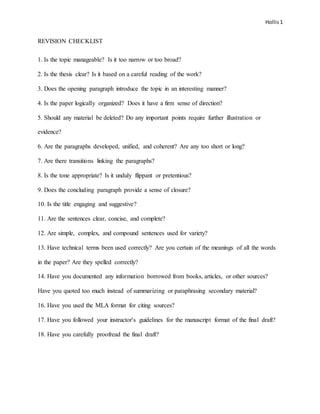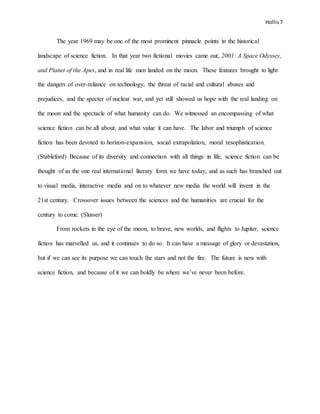The document is a revision checklist for a paper on the nature and value of science fiction. It contains 18 questions to guide the author in revising their paper, checking for issues like topic scope, thesis clarity, organization, grammar, citations, and following assignment guidelines. The checklist aims to help the author strengthen and polish their paper prior to final submission.







